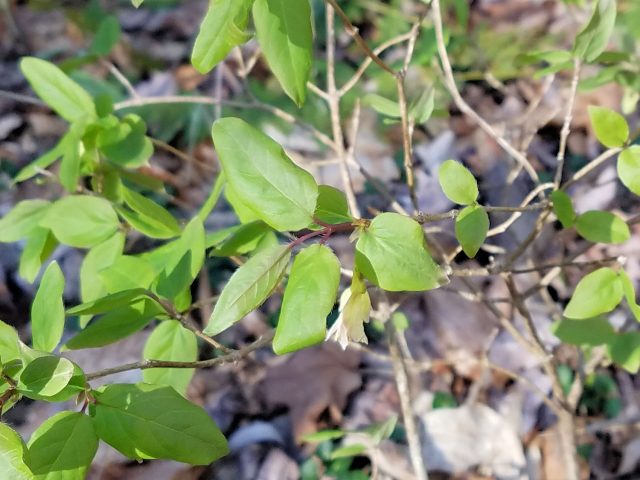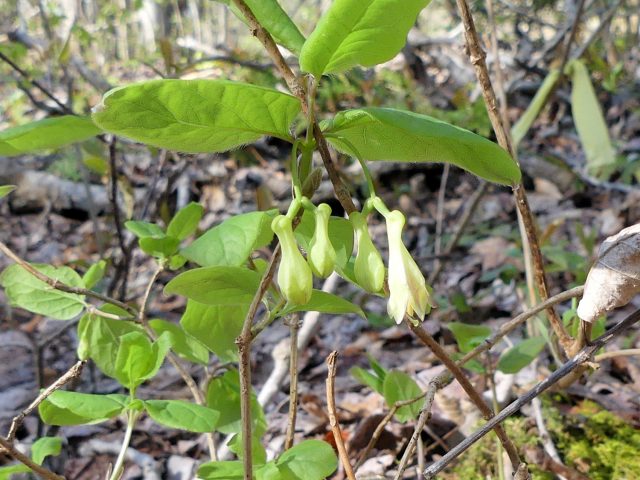Image may be NSFW.
Clik here to view. It still surprises me every time I see this shrub blooming. The bloodroots are waning and the trout lilies are gearing up. At best, the forest trees have tiny pinpricks of yellow, green, or red along their branches, a hint of the leaves to come. It’s early spring. But as I walk down the path to the creek, fly honeysuckle (Lonicera canadensis) is leafed out and shyly blooming.
It still surprises me every time I see this shrub blooming. The bloodroots are waning and the trout lilies are gearing up. At best, the forest trees have tiny pinpricks of yellow, green, or red along their branches, a hint of the leaves to come. It’s early spring. But as I walk down the path to the creek, fly honeysuckle (Lonicera canadensis) is leafed out and shyly blooming.
Clik here to view.

It looks like it’s struggling to survive.
All shrub honeysuckles–including the invasive ones–have opposite leaves and paired berries, but there is an easy way to figure out if it’s fly honeysuckle.
Clik here to view.

The leaves have little hairs along the edges. If you can’t see them, click on the photo to enlarge it.
Fly honeysuckle likes cool forests, especially near stream banks and ledges. And no, I don’t know why it’s called fly honeysuckle. According to the WildSeed Project, clearwing moths and mellitophilous bees visit the flowers. The Lady Bird Johnson Wildflower Center credits hummingbirds, butterflies, and bumblebees with visiting the flowers. No one mentions flies.
A lot of different birds love the berries, according to the Brooklyn Botanic Garden: Ruffed Grouse, American Robin, Gray-cheeked Thrush, Swainson’s Thrush, Gray Catbird, Cedar Waxwing, Cardinal, Purple Finch, Goldfinch, White-throated Sparrow, Mockingbird and others.
Clik here to view.

The flowers are delicately tinged with lilac and open a few at a time.
There’s nothing about this shrub that knocks your socks off, and yet, every time I come across it I feel like I’ve discovered a treasure. It’s a humble plant, dismissed by reference works and field guides, but perhaps its modest nature is what appeals to me.
